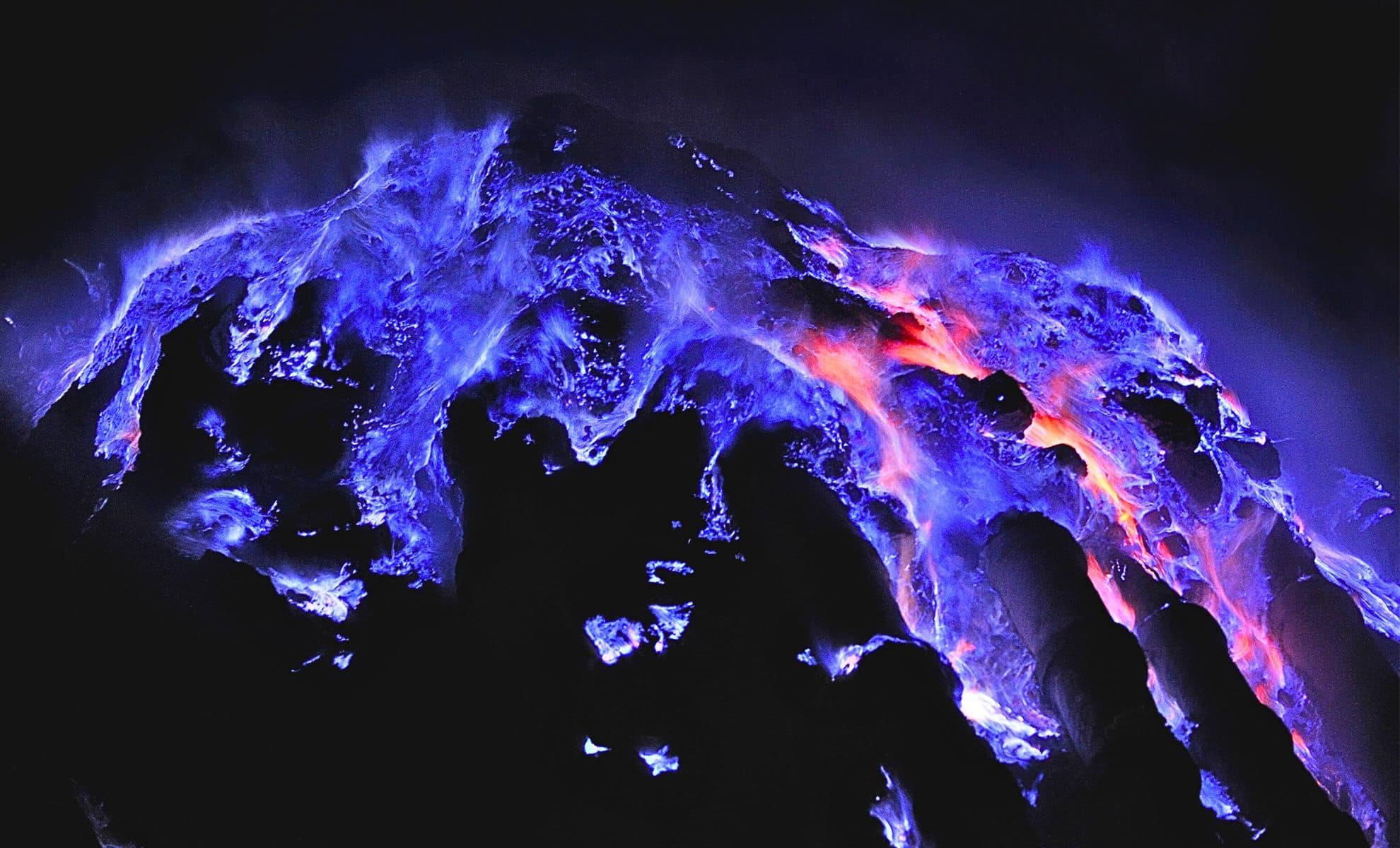
Located in the eastern part of Java, Indonesia, the Kawah Ijen volcano captivates visitors with its stunning display of neon-blue flames illuminating its crater during the night. While it may seem as though the volcano is releasing blue lava, the reality behind this phenomenon is even more intriguing. This unique event, alongside one of the most acidic lakes on the planet and a challenging sulfur mining operation, positions Kawah Ijen as one of the most remarkable and hazardous volcanic locations globally.
Understanding the Mystique of the Blue Flames
Though the blue flames at Kawah Ijen are a breathtaking sight, they do not originate from molten rock. As reported by Smithsonianmag, this glow comes from the ignition of sulfuric gases. When these gases escape from the volcano’s fissures at temperatures reaching 600°C (1,112°F), they combust upon meeting the oxygen in the air, resulting in the vivid blue flames.
Sometimes, molten sulfur continues to burn as it flows downhill, creating the illusion of shimmering blue rivers. This mesmerizing phenomenon is only observable at night, as daylight diminishes the glow. While other volcanoes around the globe emit sulfuric gases, Kawah Ijen’s unique chemical makeup and concentrations intensify this spectacular sight.


The Earth’s Most Acidic Crater Lake
At the peak of Kawah Ijen sits an extraordinary turquoise crater lake, renowned as the largest acidic lake in the world. This extreme acidity results from high concentrations of sulfuric and hydrochloric acids, resulting in a minimum pH of 0.13 at its center—so potent that it can dissolve metals.
The lake represents not only a scientific wonder, but also an environmental challenge. The Banyupahit River, which flows from this lake, carries its acidic waters downstream, impacting local ecosystems and vegetation.
Despite its stunning visual allure, the lake presents significant dangers, as prolonged exposure to its acidic fumes can lead to serious health risks.


The Grim Reality of Sulfur Mining
Beyond its breathtaking scenes, Kawah Ijen serves as a functioning volcano, where numerous sulfur miners face perilous conditions. The volcano’s fumaroles produce thick clouds of toxic gases, and miners utilize basic piping techniques to collect and condense the sulfur, which solidifies into bright yellow chunks.
These laborers break the sulfur by hand and carry burdens of up to 90 kilograms (200 lbs) down the steep crater slopes, often multiple times a day. Without adequate protective gear, many endure respiratory ailments from extended exposure to sulfur dioxide and hydrogen sulfide.
With an average lifespan of just 40 years, these miners confront some of the most difficult labor conditions worldwide, making Kawah Ijen not only a wonder of nature but also a testament to human resilience.
Navigating the Intersection of Tourism and Conservation
The enchanting blue flames of Kawah Ijen have quickly become a prominent tourist hotspot, attracting adventurers from across the globe. Guided tours typically start in the early morning, granting visitors the opportunity to witness the breathtaking blue light prior to dawn.
However, the growing influx of visitors raises environmental and safety concerns. Unregulated tourism and increased foot traffic jeopardize the fragile ecosystem of the acidic lake and sulfur field. Additionally, tourists getting too close to the flames without appropriate gas masks risk severe respiratory harm due to the toxic vapors.
While strides are being made to implement conservation efforts alongside sustainable tourism practices, achieving a harmonious balance remains an ongoing challenge.


A Realm of Peril and Enchantment
Kawah Ijen embodies extremes, where fire glows blue, water is corrosive, and miners confront life-threatening gases daily. This volcanic wonder, with its otherworldly luminescence and dangerous atmosphere, reveals the intricate and often risky balance between the stunning beauty of nature and its raw, destructive force.
Whether regarded as a scientific marvel, a hazardous workplace, or a photographer’s paradise, Kawah Ijen stands out as one of the most intriguing volcanoes on the globe—a place where the planet’s most powerful elements converge in an explosive dance of chemistry, geology, and human perseverance.









